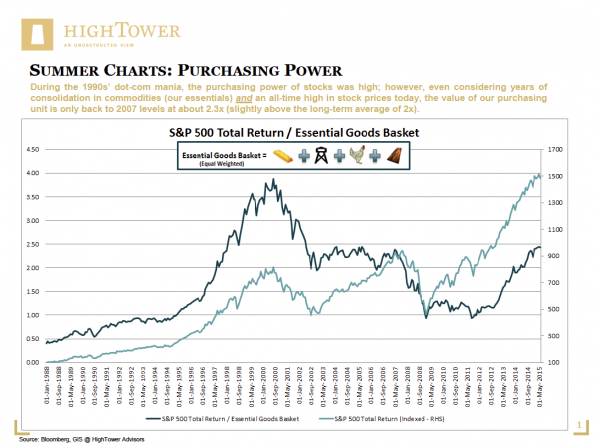“Summer Charts” is a series of current financial topics explained in dots, lines, and only a few words—just the right “mix” to concisely convey ideas for critical thinking about investing.
Purchasing power is “the value of money when measured by the quality and quantity of products and services it can buy.” Philosopher Adam Smith's definition goes further, with purchasing power providing the “ability to demand labor,” consequently “gaining power over people”—the basis for currency wars and much political conflict today.
Based on a common notion that stocks “will hold value over time,” we analyzed the purchasing power of the S&P 500 in relation to the price of a basket of “essential goods”: equal parts oil, poultry, timber, and gold. Our definition of “essential” seemed agreeable, as people need to eat, move around, build, and store value in some form of historically accepted tender. Our model considers the index level of the S&P 500 TR (Total Return, accounting for price plus dividends) as one purchasing unit relative to our basket of goods.
During the 1990s’ dot-com mania, the purchasing power of stocks was high; however, even considering years of consolidation in commodities (our essentials) and an all-time high in stock prices today, the value of our purchasing unit is only back to 2007 levels at about 2.3x (slightly above the long-term average of 2x). While one may argue with the basis of chosen “essentials,” the findings are important: It is no coincidence that the loss of purchasing power has occurred over a time period marked by aggressively accommodative central bank policies.

Matthias Paul Kuhlmey is a Partner and Head of Global Investment Solutions (GIS) at HighTower Advisors. He serves as wealth manager to High Net Worth and Ultra-High Net Worth Individuals, Family Offices, and Institutions.




